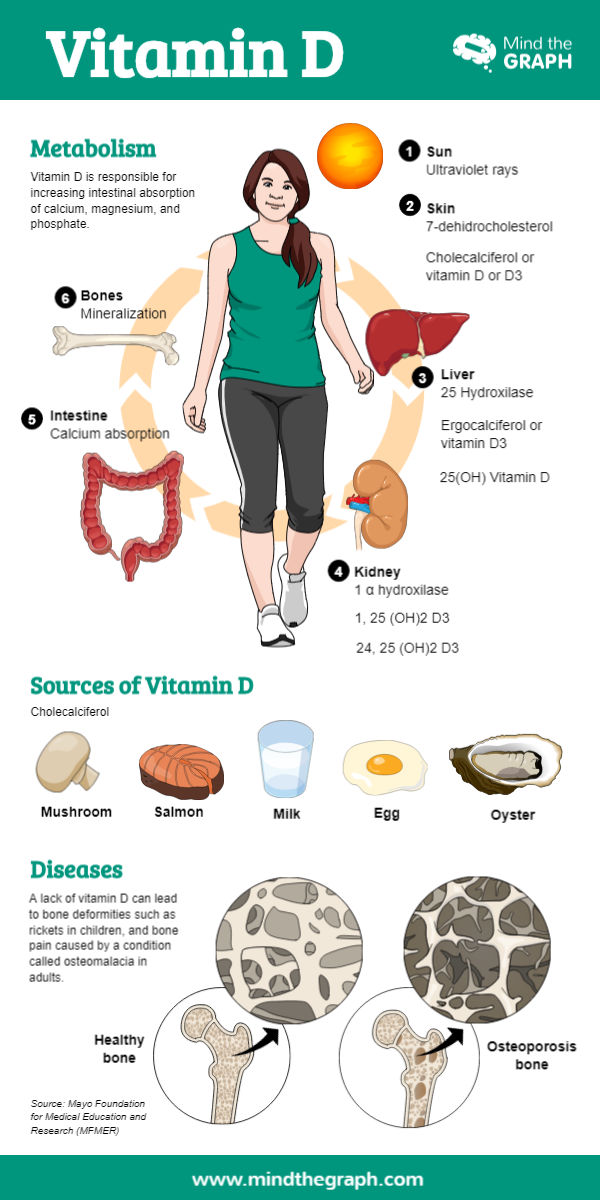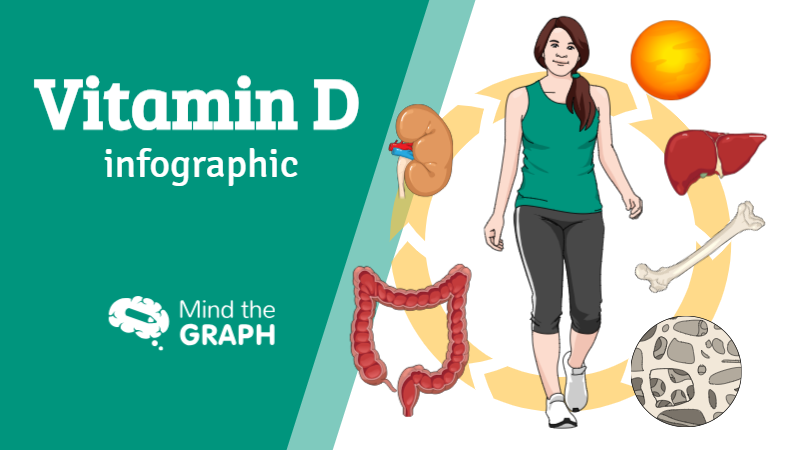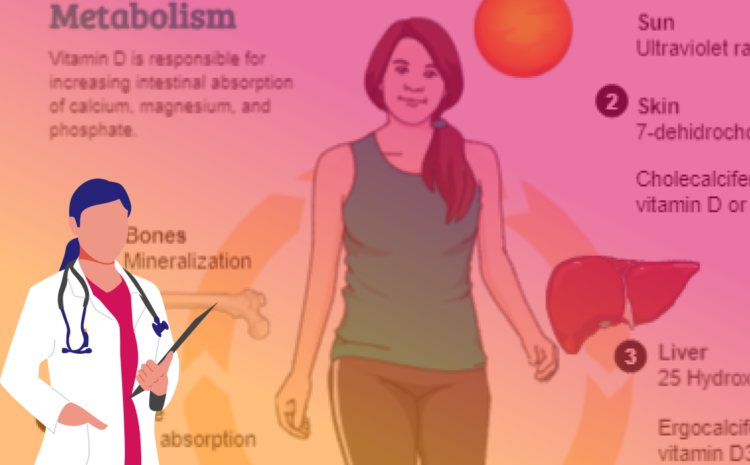Vitamin D is responsible for increasing intestinal absorption of calcium, magnesium, and phosphate. Unlike other vitamins, vitamin D works like a hormone, and our cells have a receptor for it. In humans, the most important compounds in this group are vitamin D3 (also known as cholecalciferol) and vitamin D2 (ergocalciferol).
The body produces it from cholesterol when the skin is exposed to sunlight.
It is importante to keep a healthy level of vitamin D. It has a significant role in calcium homeostasis and metabolism. Its discovery was due to effort to find the dietary substance lacking in children with rickets (the childhood form of osteomalacia). Also, there are studies showing that maintaining adequate levels of this vitamin may have a protective effect and lower the risk of developing multiple sclerosis (MS). A number of studies have shown that people who get more sun exposure and vitamin D in their diet have a lower risk of MS.
We create an infographic to help you understand the role of vitamin D in our body
Keep a healthy lifestyle with a balanced diet, physical exercise and sun exposure can be enough to keep you healthy. However, it’s important that you speak to your doctor and get your blood levels measured.

This infographic was created in Mind the Graph. You can use Mind the Graph to create your own presentations and graphical abstracts and improve your science communication. We are an online platform that allow scientists to create beautiful presentations using scientific illustrations.
You can see how to create this infographic watching the video below:

Subscribe to our newsletter
Exclusive high quality content about effective visual
communication in science.






